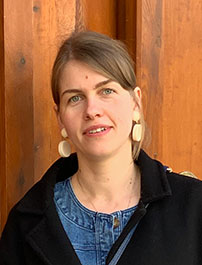Emerging Scientists Session
Interaction of flow and heat transport processes: from the single fracture towards the catchment scale
- Dr. Maria Klepikova
- University of Rennes 1

Biography
Maria Klepikova is an Associate Scientist at CNRS, the French National Centre for Scientific Research, working at the Geosciences Rennes, France. After completion of a degree in applied mathematics and physics from the Moscow Institute of Physics and Technology in Russia, she begun a PhD at the University of Rennes on the development of new approaches for imaging hydraulic and transport properties in fractured media at the field-scale. Before joining CNRS, Maria spent some years at the University of Liège in Belgium and at ETH Zürich and the University of Lausanne in Switzerland. Her research focuses on the investigation of subsurface processes by coupling fluid dynamics, solute and heat transport. She develops new research in areas ranging from the investigation of flow and heat transport at porous/single fracture scale to impacts of anthropogenic changes on groundwater systems as well as applied topics such as geothermal energy.
Introduction of the Lecture
Heat transport in fractured media has become an active field of research in the last 15 years. This is motivated by the observed thermal effect of climate change on groundwater temperatures, by the important efforts to integrate natural temperature variation in hydrogeological models, and by the growing interest in geothermal energy use. Due to flow and transport complexities at both fracture-scale and fracture-network scale, until recently, researchers have generally relied on simplified conceptual models of coupled flow and heat transport, ignoring conduction in the rock matrix, or considering very few fractures (if any) and replacing the internally heterogeneous fractures and faults by parallel plates with a constant aperture. At larger scales, equivalent continuum heterogeneous approaches (spatial averaging approaches based on the concept of a representative elementary volume) are generally used. Our recent experimental and theoretical findings questions the relevance of these classical models. In this talk, we provide evidence that flow channeling has a crucial impact on heat transport. This stresses out that considering possible 3D effects of fracture geometry is an urgent need. We then give an overview of new predictive models of subsurface flow and heat transport accounting for fracture-scale and fracture-network scale heterogeneity.


